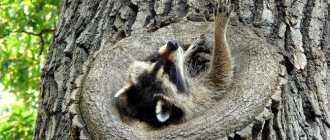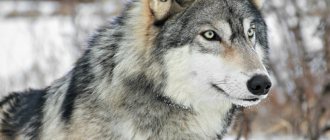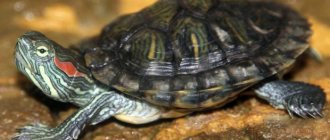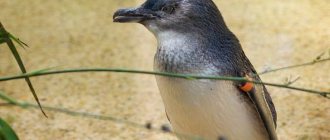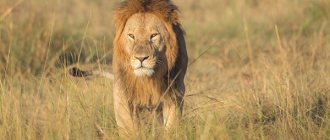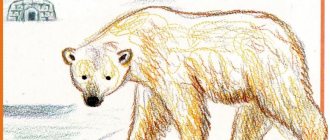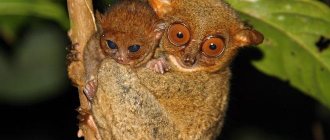The chipmunk is a small rodent, one of the representatives of the squirrel family. The size of the animal is small: it reaches 15 centimeters in length and weighs about 100-150 grams. The fluffy tail grows up to 12 centimeters. The coat is gray-brown or reddish in color, with characteristic dark stripes on the back. The front legs are shorter than the hind legs
Like other thrifty rodents, they have cheek pouches that are not noticeable until there is food in them. It is worth adding to this description of the chipmunk that the shape and location of the eyes provides a large viewing area. This helps you spot the predator in time and escape.
Kinds
There are 25 species in nature. However, the most common are 3 subgenera:
- Siberian. He is also a black chipmunk or an Asian chipmunk. It lives in the Far East and the Urals, Siberia and the north of the European part of Russia.
- Chipmunk squirrel. It lives in North America, on its west coast.
- Eastern American. Lives in North America, in its Northeastern part.
Housing for a domestic chipmunk: cage or aviary?
- In their natural habitat, chipmunks make their home in medium-depth burrows. Despite the fact that in the wild this animal lives mainly at low altitudes, it climbs trees remarkably . Therefore, they construct their “apartment” not far from trees or bushes.
- Due to the fact that the chipmunk is a very thrifty creature, its home usually consists of several holes in which it stores its food supplies. In addition, one of the “rooms” is used by the animal as a restroom.
- In the warm season, chipmunks can settle in small hollows or crevices of trees, not high from the ground.
- If you decide to have this funny rodent in your home, take care of its home in advance.
Keep in mind that the chipmunk is a very inquisitive and extremely nimble animal. If you let him out to walk around the house, then it will be quite difficult to catch him and send him back to the cage.
The domestic chipmunk is not too picky about living conditions. However, the cell intended for it must meet certain requirements:
- Be spacious , with several levels and sections, since the animal is very mobile and it desperately needs a lot of space to move. The cage is preferably about a meter in length and height, and about half a meter in width.
- Metal bars are required in the cage so that a small rodent cannot chew through them. In addition, the bars should not be spaced widely so that the miniature chipmunk does not slip between them and jump out of the cage. Sprinkle the bottom with sawdust, which should not be too fine so as not to irritate the animal’s eye mucosa. It is highly advisable to place a tray under the cage. Various garbage from it will be poured there.
The cage must have metal bars
- You must place a house in which the chipmunk can hide from prying eyes and rest, and also hide food supplies. Materials for this structure should only be of natural origin.
- In order for your animal to have the opportunity to equip its own home to its liking, do not forget to put the necessary things in the cage: leaves, hay, twigs . You should not put cotton wool in the cage because it can get into your chipmunk's food and cause him to have various health problems.
- The presence of all kinds of devices for games is mandatory: ladders, driftwood, shelves. They must be made of safe wood: pear, cherry, oak, apple tree. Plants such as broom and yew can be poisonous to chipmunks. Your active pet will be very pleased with a running wheel, where he can run around and maintain muscle tone and activity. The size of such a wheel should be half the size of a wheel intended for squirrels.
- And if you live in a private house and prefer to keep your chipmunk outside, make an enclosure . In a spacious enclosure you can keep several of these playful animals.
When constructing it, consider the basic requirements:
- An animal enclosure must be protected from rain and strong winds.
- the walls of the enclosure from fine mesh so that street animals, birds and large insects cannot get into it.
- Lay a wire net at the bottom of the structure and cover it with peat and sawdust.
Perfect
- Place stones, driftwood, large branches and logs inside.
- Birdhouses can be used as houses for chipmunks. Remember that each animal must have its own birdhouse. In addition, additional houses are necessary for supplies, which chipmunks love to make. Place dry leaves and hay inside the birdhouses.
Nutrition
The diet is based on cereals, seeds, berries and nuts. Sometimes insects are eaten. The animals distribute their supplies for the winter and take them out to dry in the spring.
Cereal grains are packed into the cheek pouches. For this method of collecting food, rodents bite the stem and pick out the contents from the ear. They are not averse to eating cucumbers, tomatoes or carrots.
Temperament and character of a domestic chipmunk
The domestic chipmunk is a playful and very funny animal that leaves no one indifferent.
These rodents are characterized by the following behavioral features:
- Extreme mobility. In the natural environment, these nimble animals are able to walk up to 12 km per day. Moreover, the period of their activity falls precisely during the daytime. So chipmunks living in captivity, as a rule, do not disturb their owners at night.
- Cleanliness and neatness. The chipmunk relieves itself in one specific place. In addition, every day he takes out the bedding from his house for drying and ventilation. So the chipmunk's cage will not have a specific odor, like most domestic rodents.
Active and clean
- Tendency to thrift. The chipmunk constantly replenishes his supplies of food, hiding them everywhere. The new owner of a chipmunk will need some time to learn to distinguish when the animal asks for food to satisfy its hunger, and when to take it to a secluded place.
- Curiosity and lack of fear. Chipmunks usually treat humans without fear, even in natural conditions. The point here, again, is the natural thriftiness of these rodents. They will constantly beg you for various goodies to replenish their bins. And if you give your pet food calmly, without making sudden movements, he will quickly become tame.
- The property of hibernating. It usually lasts from October to March. However, during its “rest” the chipmunk may wake up to refresh itself.
May wake up to refresh themselves
- Domestic chipmunks become very lazy and slow in the autumn-winter period. At such times, they do not leave their house for a long time. But at the same time, the animals wake up regularly in order to eat and move around.
- Individualism. In its natural habitat, the chipmunk prefers to live alone, choosing a separate area for its housing. The animal behaves quite aggressively towards uninvited guests. However, in captivity, chipmunks can be kept in a cage in pairs. They will treat each other quite peacefully, although clashes between them are quite likely.
- With the beginning of autumn, the animals will begin to prepare for hibernation and for this reason they may become aggressive. Therefore, during this period it is recommended to place them in different cages. Also, after the birth of the cubs, the male must be separated from the female in a separate cage.
- Ability to make funny sounds. If danger is approaching, the chipmunk warns its relatives about it using a rather loud whistle or trill. Also, with the help of original sounds, these funny animals warn about the upcoming rain.
Photos of chipmunks
Caring for a pet chipmunk at home
- Keeping chipmunks at home is no more difficult than keeping other domestic rodents. Many owners claim that it is even simpler, since these animals are very clean, unpretentious in feeding and calm at night.
- Nowadays, purchasing a chipmunk is not as difficult or expensive as some people think.
Bringing a wild animal into your home can be dangerous, as it can be a carrier of various serious diseases (toxoplasmosis, distemper, etc.). Therefore, take your chipmunk from a pet store or nursery. Refrain from buying second hand; in this case, there is also a high probability of purchasing a sick animal.
To keep your pet chipmunk happy and healthy, follow the basic rules of caring for him:
- Clean the cage daily , even though chipmunks are very clean. To make this process comfortable, it is better to purchase a cage with a retractable bottom.
- Don’t forget to periodically remove any leftover food from the “house” that your chipmunk loves to hoard. After all, they tend to deteriorate and can become a breeding ground for unpleasant odors and midges.
- Take care of the correct temperature for your little pet. This is the key to his health and good mood. The cage should be placed in a dark place, because chipmunks do not tolerate high temperatures. However, keeping it in the shade all the time is also not worth it.
- Periodically take the cage out into the sun so that the animal can warm up. During the summer months, do this in the morning hours when the sun is not too hot.
Baby needs care
- Let your chipmunk out of his cage to run around the house occasionally. Let him frolic in the open air. However, keep a close eye on him during such walks so that he does not get into anything and harm himself. After all, a nimble and curious animal can easily fall out of a window, enter an open balcony, or jump out of an apartment through slightly opened doors.
- During hibernation, create suitable conditions for your pet: take the cage to a darker and cooler place.
New in blogs
The Chipmunks became famous, among other things, from the cartoon characters Chip and Dale and the film Alvin and the Chipmunks (2007). And the cities of Krasnoturinsk and Volchansk, which are located in the Sverdlovsk region, also have an image of a chipmunk on their coats of arms.
Chipmunks are part of the squirrel family and belong to the genus of rodents. The genus chipmunks includes twenty-five species. Most of these species inhabit North America. One Eurasian species of chipmunks is also known. This is an Asian (Siberian) chipmunk.
Love
A chipmunk is similar to a squirrel. This analogy can be drawn if you pay attention to the appearance of chipmunks and squirrels, while in terms of family relationships, the chipmunk is still closer to marmots and gophers (by analogy with them, it has cheek pouches, which the chipmunk uses to drag small portions of food). The body structure of the chipmunk is quite “arboreal” - these are not very long claws, and a significant difference in the length of the front and rear legs.
Vla-aaaa-gaa..
An interesting fact is that the animal got its name because of the special sound it makes before the rain, which is reminiscent of the word “chipmunk”.
Hello!
The Siberian chipmunk is the only representative of the Eurasian chipmunks. The length of its body reaches seventeen centimeters, and its tail - thirteen centimeters. The length of the tail is always more than half the length of the body. Siberian chipmunks have short fur, and summer fur is almost no different from winter fur. The fur of the upper body is reddish-gray in color, and five narrow dark stripes alternate with lighter ones. The color of the fur on the animal's belly is white.
Get ready!..
The Asian chipmunk inhabits the entire taiga zone of Eurasia - however, the highest density of chipmunks is observed in the cedar-broad-leaved forests of the Primorsky Territory. It is here that in the most favorable years, up to two hundred to three hundred of these animals can live on an area of one square kilometer.
Do you want a berry too?! Will not give it back!
Chipmunks live alone. Indeed, the word collective is in no way appropriate in this case. Each individual lives in its own area and has its own nests. As for the latter, two chipmunks will never be able to get along with each other in the same shelter.
Right now, I’ll push it in and let’s talk...
Chipmunks are characterized by the presence of a complex sound alarm system. If the animal senses danger, it either emits a rather sharp trill or whistles in monosyllables.
Chipmunks are nomadic animals. They are forced to wander due to lack of food, for example, in lean years. In a new place, these animals create temporary shelters for themselves. For example, in the Far East and Eastern Siberia, the time of ripening of grain fields coincides with the time of chipmunks’ migrations to them. Mountain areas are characterized by “berry” migrations of chipmunks. Naturally, the latter are associated with the time when the berries begin to ripen.
Ooohh...I think that's enough! Went home!
Squirrels are charming and nimble animals that live in trees.
We have a production meeting...
The squirrel's body length is nineteen to twenty-eight centimeters; its bushy tail can have the same length. With the help of its long tail, the squirrel maintains balance while jumping from one tree to another. In summer, squirrels are red in color, and in winter, gray. Sometimes you can find squirrels with a solid black color. They are distributed in tall forests throughout the forest and forest-steppe zone.
Let's fly..
The squirrel is known for its desire to accumulate supplies for the winter. In summer and autumn, when the squirrel finds seeds, mushrooms or nuts, it hides them in hollows or buries them in the ground. But before putting a nut or a pine cone into the hiding place, the squirrel will rub it on its nose or lick it, leaving its scent on it so that it can be found later in the winter. She forgets where exactly the squirrel left her supplies, and finds them by chance, by smell. This promotes the germination of seeds buried in the ground and the appearance of new trees. Squirrel pantries are also used by many birds and animals. Thus, the squirrel’s fanatical homeliness and thriftiness benefits the forest and saves the lives of many of its inhabitants in winter.
I’ll sleep for now... (palm squirrel)
Squirrels quite often appear in city parks and squares. There they are fed from feeders, and sometimes take gifts directly from people’s hands. Following their hoarding instinct, they take everything they are offered, even if they are not hungry. All this is dragged away and hidden in a hollow.
Click already...! Tired of holding it!
Squirrels' teeth are constantly growing and require regular grinding, so the squirrel gnaws everything that seems suitable for it. Sometimes they are quite annoying to the owners of country houses, gnawing on wooden parts of verandas, gazebos, benches, and various outbuildings.
Kiss
There are also very sad cases when, having climbed onto a power pole, a squirrel cannot distinguish the wire from the branch on which it usually sharpens its teeth. As a result, a short circuit occurs, often fraught with a tragic outcome for the squirrel.
Snowball
Spring is the hardest time for squirrels. They are running out of nuts hidden in hollows and buried in the ground. Until new ones ripen, squirrels eat the buds of some trees.
It’s good here in Siberia... (common flying squirrel)
Hallelujah! Summer!
Thirst…
Squirrels are easily tamed, they are curious, trusting and friendly. In mythology, a squirrel is a human-friendly creature, a harbinger of good changes. It is associated with homeliness and hospitality.
You can drink some water anyway!
Taxi-iii!
I'll catch you!
Contrary to popular belief that squirrels are exclusively herbivores, they can also feed on animal food, such as insects and their larvae.
Reproduction and population
The mating season begins after hibernation ends. During the rut, females give a signal, calling suitors with thin whistling sounds. Already 30 days after mating, cubs are born. The number in a litter ranges from 3 to 6, sometimes more. The puppies are blind and have no fur. But after a couple of weeks, the chipmunks are completely “dressed.” The eyes do not open immediately, after about 21 days. The mother finishes feeding her offspring after a month, then the children leave the home and learn to get provisions. Already at one and a half months old, young chipmunks begin an independent life. They reach puberty only after 11 months.
In Russia, the striped rodent is considered a rare species, so it was included in the Red Book. The number of chipmunks varies, depending on the availability of food supply. For example, in lean years the population declines by about 5%. In Northern Altai, the maximum number of animals was recorded - 225 individuals per square meter. km after the appearance of the young.
Such numbers were observed only in cedar-fir thickets. In mixed and deciduous forests there are much fewer animals - up to 27 adult rodents, 71 - after the offspring appear.
Home arrangement and diet
A cozy, spacious hole is where the chipmunk lives. The underground “apartment” is clearly divided into different zones. It definitely has rooms for different purposes:
- Hallway.
- The resting place is carefully covered with leaves and down.
- Pantries - each for a different type of food.
- Lavatory - a clean animal can equip several toilet rooms.
The entrance to housing can be found near the roots of trees, and entire settlements of animals are often found. Chipmunks usually live alone and jealously guard their territory from overly friendly neighbors. They mark the boundaries of their territory with secretions with a pungent odor. Although chipmunks run out to the fields to harvest at the same time, they also stay apart there.
For the winter, thrifty animals collect up to 8 kg of food, which is a lot for such a miniature creature. The instinct of survival forces the animal to put aside supplies. From August, the hardworking chipmunk begins to carry food into the pantries in its cheek pouches. Everything the chipmunk eats is neatly folded up. Seeds of shrubs and herbs, cereals grown by humans in the fields, nuts, berries and mushrooms, even bird eggs and worms - the diet can be very diverse .
What to feed your pet chipmunk?
- In their natural environment, chipmunks feed on seeds, young shoots of plants, various berries and small insects. And for the winter they store acorns, nuts and dried berries.
- At home, you can feed your chipmunk ready-made food , which is sold in abundance in pet stores. These animals are quite suitable for food intended for hamsters and guinea pigs.
With great pleasure, a domestic chipmunk will also consume natural food:
- Nuts of various types. But do not feed your chipmunk almonds, as the hydrocyanic acid it contains is harmful to rodents.
- Seeds.
- Vegetables and fruits (fresh or dried). It is best to remove the skin as animals may be sensitive to chemicals that may be on the surface.
- Cereals.
- Dandelion and cabbage leaves.
- Sprouted wheat or corn seeds.
- Hard-boiled egg.
- Low-fat cottage cheese.
Any types of nuts. Insects
- grasshoppers, crickets, beetles, larvae - can be used as additional food. And chipmunks will not refuse treats in the form of cookies or a piece of sugar.
Try not to overfeed your rodent; keep in mind that an adult male chipmunk needs up to 10 g of food, and a female – no more than 7 g. A chipmunk should always have clean and fresh water in its cage for drinking. For convenience, you can use a container that is designed for parrots.
- When preparing a diet for your furry pet, make sure that, along with soft food, it also contains solid food.
- It is needed so that the domestic chipmunk can sharpen its constantly growing incisors. Experts also advise putting a piece of chalk in his cage for the same purposes.
